New Year Plant Hunt 2017/18 - Kent : Part 2 : Swanscombe & Strood
This concluding part of my New year Plant Hunt covers 31st December and 1st January.
The area covered was mainly Manor Way, nearby road verges and a small bit of Swanscombe Marshes. It was full of litter from the numerous lorries that overnight here on a regular basis, including full plastic bottles of urine. Thus you can see I don't necessarily select beautiful areas to hunt for wildflowers. I have mostly excluded species I found in Part 1 so as not to duplicate things.
Yarrow was flowering almost everywhere in Kent a week before the hunt, but a couple of hard frosts killed off most of the flowers.
So I was lucky to find a couple still going.
Achillea millefolium
Red Valerian loves "waste" areas as well as coasts and here was no exception.
Centranthus ruber
Along the road verge I came across numerous Creeping Thistles with flowers in bud, so I was pleased to find one with flowers sufficiently open to count.
Cirsium arvense
Conyza is a tricky set of species to tell apart, however this is Canadian Fleabane, but much more prevalent was Bilbao Fleabane, but the photos were all blurred.
Conyza canadensis
Most people are familiar with catkins hanging off trees in Spring.
These are the male flowers of the Hazel tree. Look closely at the photo and you can also see the tiny red female flower above them.
Corylus avellana
Here's a close up of the tiny female flower. It was difficult to photograph being high up on a branch swaying in the breeze.
I was pleased to find a Fennel plant flowering along the rubbish strewn verges. Its yellow flowers and fine leaves make it an easy umbellifer to identify.
Foeniculum vulgare
Hoary Mustard was in flower here as well. It seems to have spread rapidly through Kent.
Seeds are the best way to ID crucifers, thus I took the photo below to make sure I was right.
Hirschfeldia incana
Then came the most surprising find of my New Year Plant Hunt, a naturalised Red Hot Poker.
This is a Summer flowering plant that usually adorns well kept gardens, but here it was on a road verge with no houses or habitation nearby.
Here's a close up of the flowers
It probably arrived in fly tipped soil.
Kniphofia agg.
And a habitat photo showing the road verge full of Ivy
Further along Manor Way was another Summer flowering surprise species, a native Common Poppy!
Papaver rhoeas
Hawkweed Oxtongue put in an appearance, though it was covered in chalk mud from passing lorries making it look grey!
Picris hieracioides
This picture shows the leaves and how different it is to the other similar looking common plant found through Autumn, Bristly Oxtongue.
All along Manor Way were colonies of Narrow-leaved Ragwort. It's a plant originally from South Africa (a hot country) so it's surprising that it flowers all through Winter here. It's now widely naturalised all through North Kent.
I also found Common and Oxford Ragworts in flower.
Senecio inaequidens
Here's a couple of scenic shots. What it does show (apart from how crap we are with leaving and dealing with litter) is that wildflowers don't care in the slightest though birds and mammals could end up in serious trouble if they get entangled in the waste.
It was pretty much like this all the way along the road.
A short diversion onto Swanscombe Marshes gave up this Red Clover with their multi flowered heads.
Trifolium pratense
Scentless Mayweed was here and there, including some with very small flowers which were unusual but probably due to the recent cold snap.
There's even a pollinating fly on this one.
Tripleurospermum inodorum
The final plant in flower was this grass, called Cocksfoot. There were many plants scattered about in all stages of flowering to being in seed.
Dactylis glomerata
I had half an hour left in my allotted 3 hours hunt time, so I drove the short distance to a road in Northfleet that backs onto the tidal Thames behind the Wallis Park estate, an ugly 1960s concrete block of flats.
By the road were a few flowering plants of Hedgerow Cranesbill.
However, behind an iron gate, was an old concrete slipway down to the Thames covered in over 100 flowering plants!
Geranium pyrenaicum
Alexanders will be flowering in their hundreds of thousands in my area in 2-3 months time, but one had jumped the gun and was in full flower now in Wallis Park car park!
Smyrnium olusatrum
My last photo was also in the grassed areas of the car park, Common Chickweed.
Stellaria media
That ended my 2nd day of plant hunting.
Day 3 was to a venue South of Strood that backs onto Plantlife's Ranscombe Farm reserve close to the M2 motorway. I didn't find as much as I had hoped for here, but did find several records. Here's some photos from here.
Through my eye loupe I could make out stamens so this partially open flower counts for the hunt.
It's a Spear Thistle, which I haven't seen in flower since late Summer. They go to seed earlier than Creeping Thistles so this was a surprise find.
Cirsium vulgare
The pale green parsley type leaves and the purple spotted stem means this can only be Hemlock, a very poisonous plant found growing up a barbed wire fence of a horses field
Thankfully, the horses obviously know it's poisonous as they hadn't touched it. This usually flowers in late Spring in their thousands with plants often exceeding 6 feet tall.
Conium maculatum
Nipplewort with its dainty lemon coloured flowers is often found in arable fields where it can be quite small.
Here it was growing in a shaded location where they often grow over 3 feet tall.
Lapsana communis
This slightly out of focus shot is of Perennial Mercury, coming into flower about a month early. It's very common in shady woods on chalk. Like it's cousin Annual Mercury, there are no petals on the flowers.
Mercurialis perennis
A few Bramble flowers put in an appearance though looking a bit tatty.
Rubus fruticosus agg.
Finally, some Gorse, frequent wherever the soil isn't too limy.
Ulex europaeus
There was another day of the New year Plant Hunt left but I was unable to go out that day. However, I was very happy with what I did find and hope it contributes to the ongoing research that the BSBI are hosting.
Regards
Dave
@Barbus59
Swanscombe
The area covered was mainly Manor Way, nearby road verges and a small bit of Swanscombe Marshes. It was full of litter from the numerous lorries that overnight here on a regular basis, including full plastic bottles of urine. Thus you can see I don't necessarily select beautiful areas to hunt for wildflowers. I have mostly excluded species I found in Part 1 so as not to duplicate things.
Yarrow was flowering almost everywhere in Kent a week before the hunt, but a couple of hard frosts killed off most of the flowers.
So I was lucky to find a couple still going.
Achillea millefolium
Red Valerian loves "waste" areas as well as coasts and here was no exception.
Centranthus ruber
Along the road verge I came across numerous Creeping Thistles with flowers in bud, so I was pleased to find one with flowers sufficiently open to count.
Cirsium arvense
Conyza is a tricky set of species to tell apart, however this is Canadian Fleabane, but much more prevalent was Bilbao Fleabane, but the photos were all blurred.
Conyza canadensis
Most people are familiar with catkins hanging off trees in Spring.
These are the male flowers of the Hazel tree. Look closely at the photo and you can also see the tiny red female flower above them.
Corylus avellana
Here's a close up of the tiny female flower. It was difficult to photograph being high up on a branch swaying in the breeze.
I was pleased to find a Fennel plant flowering along the rubbish strewn verges. Its yellow flowers and fine leaves make it an easy umbellifer to identify.
Foeniculum vulgare
Hoary Mustard was in flower here as well. It seems to have spread rapidly through Kent.
Seeds are the best way to ID crucifers, thus I took the photo below to make sure I was right.
Hirschfeldia incana
Then came the most surprising find of my New Year Plant Hunt, a naturalised Red Hot Poker.
This is a Summer flowering plant that usually adorns well kept gardens, but here it was on a road verge with no houses or habitation nearby.
Here's a close up of the flowers
It probably arrived in fly tipped soil.
Kniphofia agg.
And a habitat photo showing the road verge full of Ivy
Further along Manor Way was another Summer flowering surprise species, a native Common Poppy!
Papaver rhoeas
Hawkweed Oxtongue put in an appearance, though it was covered in chalk mud from passing lorries making it look grey!
Picris hieracioides
This picture shows the leaves and how different it is to the other similar looking common plant found through Autumn, Bristly Oxtongue.
All along Manor Way were colonies of Narrow-leaved Ragwort. It's a plant originally from South Africa (a hot country) so it's surprising that it flowers all through Winter here. It's now widely naturalised all through North Kent.
I also found Common and Oxford Ragworts in flower.
Senecio inaequidens
Here's a couple of scenic shots. What it does show (apart from how crap we are with leaving and dealing with litter) is that wildflowers don't care in the slightest though birds and mammals could end up in serious trouble if they get entangled in the waste.
It was pretty much like this all the way along the road.
A short diversion onto Swanscombe Marshes gave up this Red Clover with their multi flowered heads.
Trifolium pratense
Scentless Mayweed was here and there, including some with very small flowers which were unusual but probably due to the recent cold snap.
There's even a pollinating fly on this one.
Tripleurospermum inodorum
The final plant in flower was this grass, called Cocksfoot. There were many plants scattered about in all stages of flowering to being in seed.
Dactylis glomerata
Northfleet
I had half an hour left in my allotted 3 hours hunt time, so I drove the short distance to a road in Northfleet that backs onto the tidal Thames behind the Wallis Park estate, an ugly 1960s concrete block of flats.
By the road were a few flowering plants of Hedgerow Cranesbill.
However, behind an iron gate, was an old concrete slipway down to the Thames covered in over 100 flowering plants!
Geranium pyrenaicum
Alexanders will be flowering in their hundreds of thousands in my area in 2-3 months time, but one had jumped the gun and was in full flower now in Wallis Park car park!
Smyrnium olusatrum
My last photo was also in the grassed areas of the car park, Common Chickweed.
Stellaria media
That ended my 2nd day of plant hunting.
Strood - South
Day 3 was to a venue South of Strood that backs onto Plantlife's Ranscombe Farm reserve close to the M2 motorway. I didn't find as much as I had hoped for here, but did find several records. Here's some photos from here.
Through my eye loupe I could make out stamens so this partially open flower counts for the hunt.
It's a Spear Thistle, which I haven't seen in flower since late Summer. They go to seed earlier than Creeping Thistles so this was a surprise find.
Cirsium vulgare
The pale green parsley type leaves and the purple spotted stem means this can only be Hemlock, a very poisonous plant found growing up a barbed wire fence of a horses field
Thankfully, the horses obviously know it's poisonous as they hadn't touched it. This usually flowers in late Spring in their thousands with plants often exceeding 6 feet tall.
Conium maculatum
Nipplewort with its dainty lemon coloured flowers is often found in arable fields where it can be quite small.
Here it was growing in a shaded location where they often grow over 3 feet tall.
Lapsana communis
This slightly out of focus shot is of Perennial Mercury, coming into flower about a month early. It's very common in shady woods on chalk. Like it's cousin Annual Mercury, there are no petals on the flowers.
Mercurialis perennis
A few Bramble flowers put in an appearance though looking a bit tatty.
Rubus fruticosus agg.
Finally, some Gorse, frequent wherever the soil isn't too limy.
Ulex europaeus
There was another day of the New year Plant Hunt left but I was unable to go out that day. However, I was very happy with what I did find and hope it contributes to the ongoing research that the BSBI are hosting.
Regards
Dave
@Barbus59
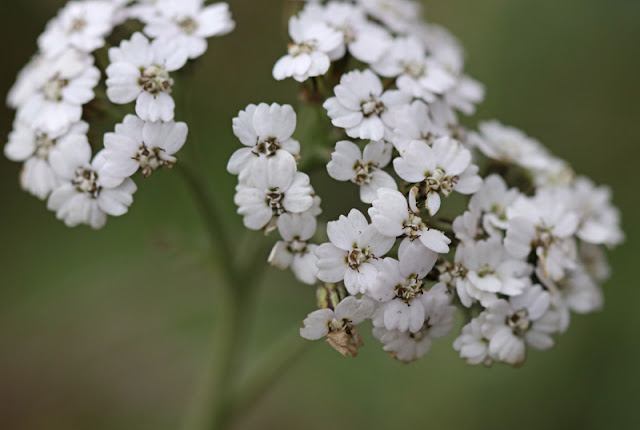




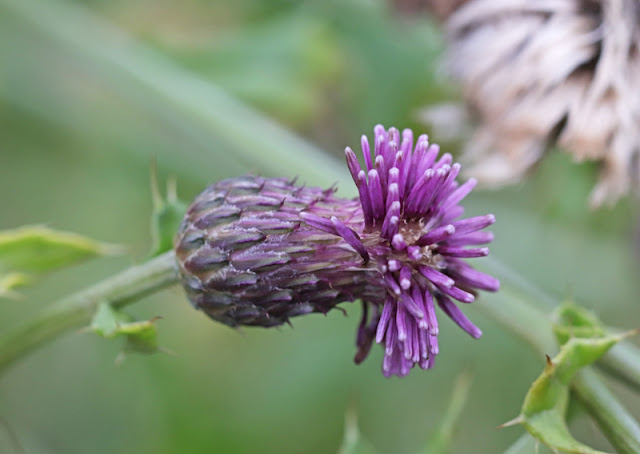



















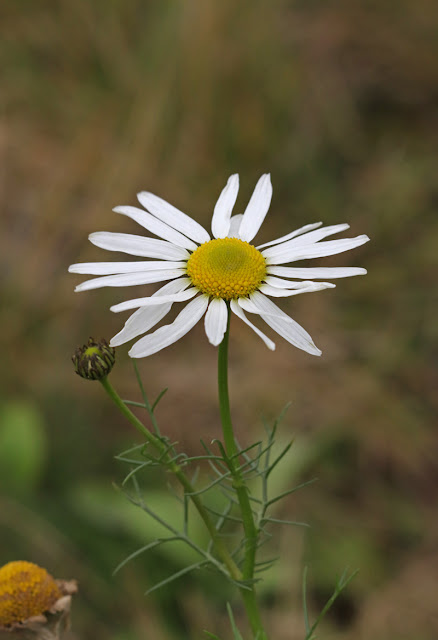














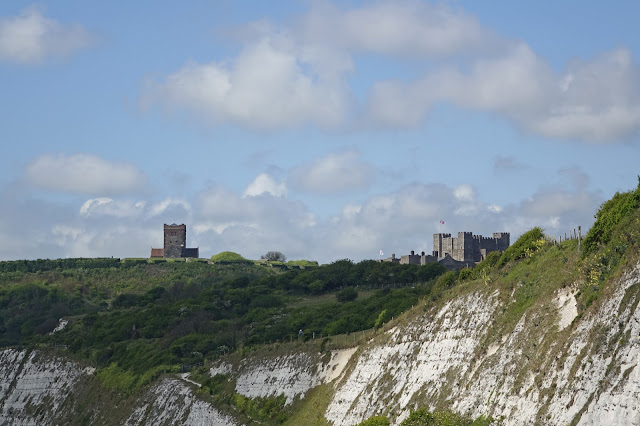
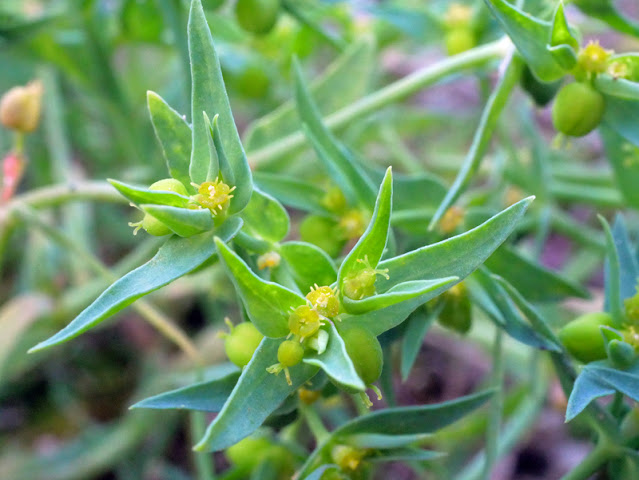
Comments
Post a Comment
Comments welcome from those interested in my articles. For spammers don't bother as I moderate all comments prior to posting them.